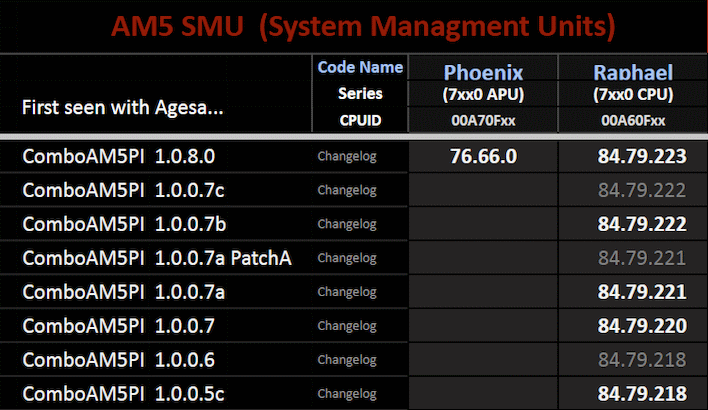AMD AGESA Code Hints At Ryzen 7000G Phoenix APUs Rising On The Desktop
AMD hasn't released any APUs for the Socket AM5 platform yet, likely because the company has been focused on making sure the more important and lucrative high-performance desktop market was served. However, the company's Ryzen 7000 laptop processors are fully available in the market now, and you can buy handhelds and mini-PCs featuring "Phoenix" processors if you desire.
That's not quite the same as a socketed CPU, though. Typically, mini-PCs and handheld systems don't have the same level of customization, expansion, or overclocking ability as a full-on desktop platform. So saying, there are plenty of reasons to want a Phoenix processor on the Socket AM5 platform, and it looks like AMD will be delivering exactly that soon enough.

This is a screenshot of a Google Sheet maintained by Reous, a user over on the German-language HardwareLUXX forums. It lists every known revision of the AMD Socket AM5 AGESA firmware, along with the SMU firmware version included in those packages. As you can see, the latest AGESA version seems to have added support for the Phoenix die that as of yet hasn't appeared in socketed form.
These could be some pretty compelling processors. Eight Zen 4 cores is plenty for just about any non-content-creation desktop use case, and the twelve-CU RDNA 3 GPU gives stellar results even when power-limited in handheld devices. A desktop part could crank the power limit all the way to the 54W maximum of current Phoenix parts, or even higher, offering still better performance in workloads like games that will hammer both CPU and GPU cores.
Recent Socket AM5 AGESA updates have allowed extant Ryzen desktop CPUs to hit heretofore unseen memory transfer rates by allowing the memory controller to enter "Gear 2." It increases memory latency significantly but also allowing higher transfer rates. This generally won't be a net gain (at least in games) for a standard desktop CPU, but on an APU with a powerful integrated GPU, it might be key to hitting the 7000-8000 MT/s speeds that could allow one of these chips to really offer compelling 1080p gaming performance in demanding games.


